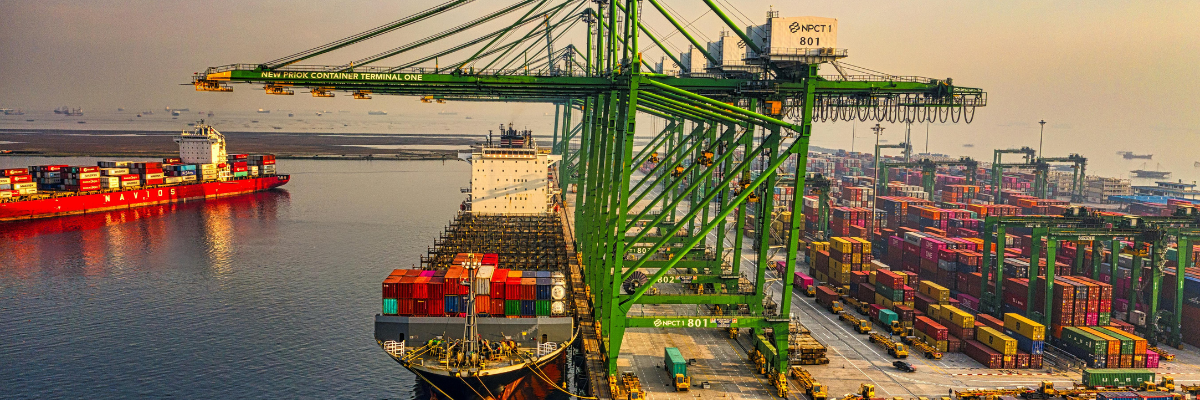In the fourth quarter, pressure on the supply chain peaks: promotional windows, holidays, customs cut-offs, and congestion at exchange hubs challenge reliability, costs, and timing. In this scenario, adopting intermodal transport as a movement architecture and strengthening import-export logistics with integrated data and processes becomes the key to turning complexity into efficiency. A unified management that coordinates routing, capacity, and compliance reduces transit times, mitigates risks, and supports margins—precisely when demand accelerates and volatility increases in global shipping.

What is intermodal transport and why is it strategic for global shipping
Intermodal transport refers to the combined and coordinated use of multiple transportation modes within a single, unified operational and documentary flow. It’s not just a sum of separate routes, but a design that optimizes each link based on cost, reliability, and sustainability. In global shipping during Q4, intermodality makes it possible to bypass bottlenecks, leverage alternative capacity windows, and consolidate volumes with greater predictability. The ability to predefine hybrid corridors and contingency plans reduces exposure to port delays, strikes, or adverse weather conditions, while end-to-end monitoring ensures real-time visibility on ETA, milestones, and deviations.
The role of import-export logistics in international trade
Import-export logistics is the framework that connects suppliers, hubs, customs, and distribution channels. Q4 amplifies the importance of an orchestrator capable of aligning Incoterms, bookings, documentation, and compliance requirements without disrupting the commercial flow. A data-driven approach enables more accurate matching of demand and capacity, planning of consolidations and deconsolidations at strategic points, and balancing lead time and total cost according to business priorities.
For international e-commerce and retail, the integration between upstream and last mile makes it possible to promise realistic delivery dates and maintain control over international freight transport costs even during peak periods.
Benefits and challenges of international freight transport
International freight transport offers economies of scale, a widespread network, and flexible routing options, but also presents real challenges such as freight rate volatility, space allocation on ships and trains, and oversized buffers. The key lies in the combination of planning and rapid response. Intermodality, combined with end-to-end visibility, allows for in-progress recalibration of choices—shifting loads to rail routes when ports are congested or advancing road segments to meet customs cut-offs—while maintaining document and insurance consistency.

Intermodal transport: benefits for efficiency and sustainability
The value of intermodal transport is not just economic, but systemic. It optimizes cost per kilometer by using the most efficient mode for each segment, reduces environmental impact by favoring rail and sea over long distances, and improves reliability through structured rerouting options. When every day of delay can erode sales and margins, resilience becomes a primary KPI: pre-negotiated corridors, reserved rail slots, and multi-carrier contracts help avoid critical dependencies, while digital integration reduces handover errors and dwell times.
International logistics consulting: how to reduce costs and risks
A solid international logistics consulting approach helps build models that align operational realities with business goals. Mapping flows, analyzing total costs, defining routing rules, and optimizing consolidation points generate measurable savings and reduce exposure to unforeseen events.
For import/export managers and operations teams, this coordination translates into faster decision-making and proactive control over lead times, costs, and compliance.
Hubrise solutions to optimize global shipping
Hubrise supports brands and manufacturers with a platform that combines execution and data governance. The centralized e-commerce order management coordinates sales channels, ERP, and WMS, applies routing rules based on priorities, destinations, and capacity, and ensures end-to-end visibility of order progress. The international shipping platform automates label generation, carrier selection, consolidations, and multi-carrier tracking, with rule engines that balance cost, SLA, and sustainability for every shipment.
With this approach, import-export logistics moves beyond the logic of the “best spot price” to embrace a resilient and scalable service model. Intermodality provides the flexibility needed to meet critical windows and contain costs even in the event of disruptions.
Looking ahead to Q4, the success of global shipping will depend on the ability to combine strategy and operations. Those who structure intermodal transport corridors in advance, connect data across the entire chain, and entrust orchestration to a partner capable of integrating technology and process will reduce complexity and inefficiencies—delivering to markets on time and protecting margins. With Hubrise, planning, execution, and visibility operate as a single system, turning international trade into a true driver of growth rather than a constant exercise in risk management.